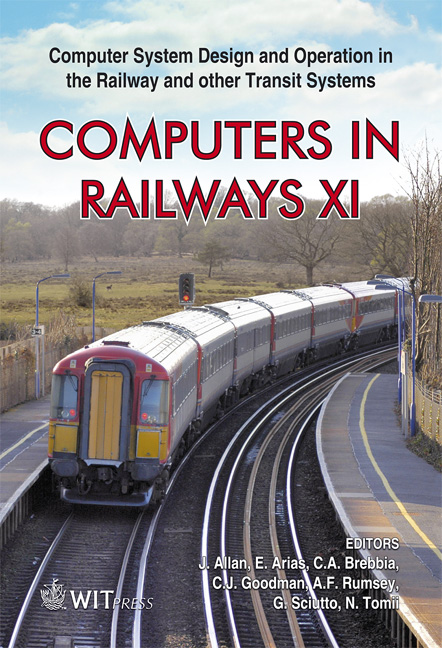Real-time Asynchronous Conflict Solving Algorithms For Computer Aided Train Dispatching Assistance Systems
Price
Free (open access)
Transaction
Volume
103
Pages
9
Page Range
555 - 563
Published
2008
Size
321 kb
Paper DOI
10.2495/CR080541
Copyright
WIT Press
Author(s)
A. Kuckelberg & E. Wendler
Abstract
The computer aided real time dispatching assistance of train runs is a hard and complex problem. Although several approaches for dispatching and train surveillance exists – often limited to very specific aspects and situations of computer aided train operation – an integrated and flexible system covering train location, delay detection, computer aided (automated) conflict resolution and dispatching decision propagation is not available. The project DISKON is a development project initiated and assigned by DEUTSCHE BAHN AG that targets such a system. The proof of concept for this integrated approach has been made in 2007, when the system was tested several weeks at the Integrated Railway Laboratory (IEL) of the University of Dresden. In 2007 and 2008 the evaluation continued under real time conditions within operation control centres. Besides different modules and components for functionalities like train position detection, train run forecast, track assimilation and prognosis of arrival and departure times one scientific core of the DISKON system is a microscopic conflict solving component on blocking time level, enriched by another macroscopic component evaluating links of connection trains. The solving algorithm extends the ASDIS/L-system developed at the RWTH Aachen. It follows an asynchronous approach, considering conflicts chronologically and depending on priority values of the involved trains. The base algorithm was elementarily revised and enhanced by conflict situation detection and a derived conflict solving strategy builder. The result set of the strategy builder controls the parameter and the behaviour of the base algorithm. In this paper a rough architecture of dispatching systems is introduced, system requirement, environmental condition and behaviour are identified and a differentiated system evaluation is presented.
Keywords





